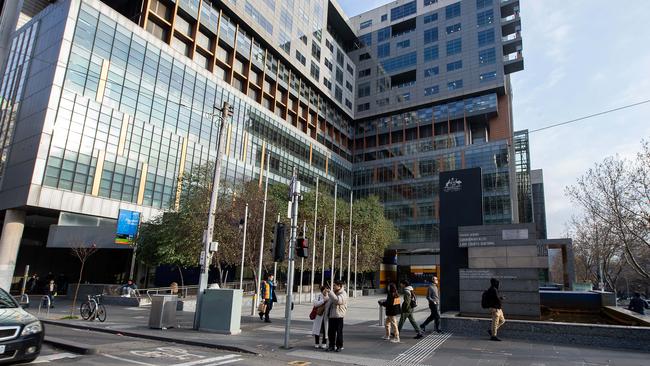The court that hears the bulk of divorce applications and family law matters
Where can you get divorced, lodge a complaint against your employer and be declared bankrupt? One court does it all.

Fewer couples are filing for divorce, more workers are lodging Fair Work complaints against their employer and an increase in bankruptcy applications is keeping one of Australia’s highest courts busy.
While the bulk of matters dealt with by the Federal Circuit and Family Court of Australia relate to family law applications, its national jurisdiction is broad – even covering maritime disputes – and people who fully know about the range of matters it scrutinises are limited to lawyers and those who wind up in court.
Yet as the court’s performance continues to improve and it finalises matters increasingly quickly, managing migration cases continues to challenge it.
What the court does
The Federal Circuit Court and Family Court were originally two separate courts, but they merged in 2021 under Chief Justice William Alstergren.
Both courts used to hear cases relating to family law, but they were merged to tackle a backlog of matters and reduce waiting times for new matters to be filed.

Since then, three consecutive annual reports show the time it takes to finalise matters is significantly improving, apart from migration matters.
With one single point of entry, the court hears family law applications and has specialist judges who also preside over general law matters, including admiralty (shipping), bankruptcy, consumer law, human rights, migration and industrial law matters.
The court’s first division deals with the most complex family law matters. It include those that have a family violence component or other risks. Allegations of child abuse or serious physical harm are included in the Magellan List, as are cases involving international child abduction.
But the vast majority of family law applications are managed in the court’s second division, and amount to about 90 per cent of the court’s work overall, Chief Justice Alstergren says.
“Instead of having two sets of rules, two sets of forms, two sets of procedures … which is always really confusing and lead to duplicity and wastage and delay, we actually have the same system going through,” he says.
“We grab it, we triage it, we work out what’s going on, what the risk factors are.”
Migration caseload
In recent years, the court’s migration caseload has grown significantly and for some time has represented the second-largest area of the court’s jurisdiction (after family law), the court’s latest annual report states.
There was a 24 per cent increase in the number of migration applications filed during the past financial year, with 4576 applications lodged.
The court’s annual report says this “is a significant incoming caseload, especially given the number of pending cases”.
There are 17,387 migration cases pending, which “places pressure on judicial resources, particularly given a number of judges who predominantly heard matters in the migration jurisdiction retired during recent years”, the report says.
An increasing migration caseload is likely to be a result of a combination of the area of law being complex, and a high proportion of litigants who are unrepresented and require interpreters.
The Albanese government allocated funding for 10 additional migration judges to be appointed to the court from January 1, 2024. However, the report notes that as at June 30, 2024, none of these judges had been appointed.
Chief Justice Alstergren said those judges were appointed in August, and have now commenced work.
This was supplemented by additional resources in the 2024-25 federal budget to assist with the migration backlog. It included funding for another four judges to be appointed from April.
“Unless additional resources are provided to the court to specifically deal with the migration caseload, the pending caseload is unlikely to decrease significantly or in a timely way,” the report says.
Justice Alstergren said migration had now taken over from family law as the area with the biggest backlog in the court.
“Unlike any other area of law, with migration you need judges because they’ve just got to be decided. They’re not going to settle,” he said.
The new judges “will make a big difference. But there’s a lot more to do.
“There are a lot of appeals. So anything up to 40 per cent of the cases might come back”.
Divorce caseload
The bulk of matters the court’s second division handles are related to family law; 95,557 applications were filed in the past financial year, and the majority were divorce applications.
Of those, 44,199 were for divorce. The court finalised 44,851 applications in the last financial year.
It marks the third year of a downward trend, and was about 3 per cent fewer than 2022-23, when 45,518 applications for divorce were lodged. In 2021-22, 46,354 applications were lodged.
The court’s clearance rate for divorce applications was 101 per cent, which could come down to the fact that deputy registrars can hear divorce matters where the application is made jointly, or if a sole application is uncontested.
They are heard electronically, and parties don’t have to attend in person.
Out of all the general federal law application types, bankruptcy matters account for the most applications filed, amounting to 45 per cent.
The court received 1382 bankruptcy applications in 2023-24 and finalised 1412. It compared with 1031 filings in 2022-23, amounting to an increase of 34 per cent. These filing figures are also yet to return to pre-pandemic filing levels.
The court also hears Fair Work applications, which account for 37 per cent of the total applications dealt with in general federal law applications.
In the past financial year, it received 1133 applications amounting to an increase in filings of 19 per cent, compared with 952 filings in 2022-23.
“However, filings in this area of the court’s jurisdiction have not yet returned to pre-Covid-19 pandemic filing levels. Prior to the pandemic, the filings in this area of the court’s jurisdiction had steadily grown since the conferral of jurisdiction,” the court’s annual report says.
While divorce, bankruptcy and Fair Work applications are what mostly keep the court’s general federal law division busy, maritime disputes by contrast are filed the least. In the past financial year four admiralty applications were filed. The year earlier, four were filed and in 2021-22 five were filed.
Disputes in this area can concern the carriage of goods, charter parties and collisions.
The court report says that while the number of admiralty and maritime matters “are not substantial”, there is “considerable importance in facilitating the fair, inexpensive and expeditious determination of maritime disputes”.
Speedy outcomes
The latest annual report says that the court aims to have a clearance rate of 100 per cent for applications in general federal law, excluding migration. In 2023-24, the court achieved a clearance rate of 99 per cent, up from 96 per cent the previous year.
And the average docket size of judges of division two has decreased from 330 cases to 70 cases, in circumstances where some judges had upwards of 500 cases in their docket, particularly if they conducted a busy regional circuit.
There is now a “high risk list”, a complex property list and a high success rate in mediation at an early stage, Chief Justice Alstergren said.
“Our goal is to try and get 90 per cent of cases out of the system within a year, and we’re much closer to that now than we ever used to be,” he said.
“Since September 1, 2021, instead of going backwards we actually have got rid of about 25 per cent of the backlog of cases.
“We’ve also got rid of 40 per cent of the cases that are over two years old. That’s unheard of.”




To join the conversation, please log in. Don't have an account? Register
Join the conversation, you are commenting as Logout